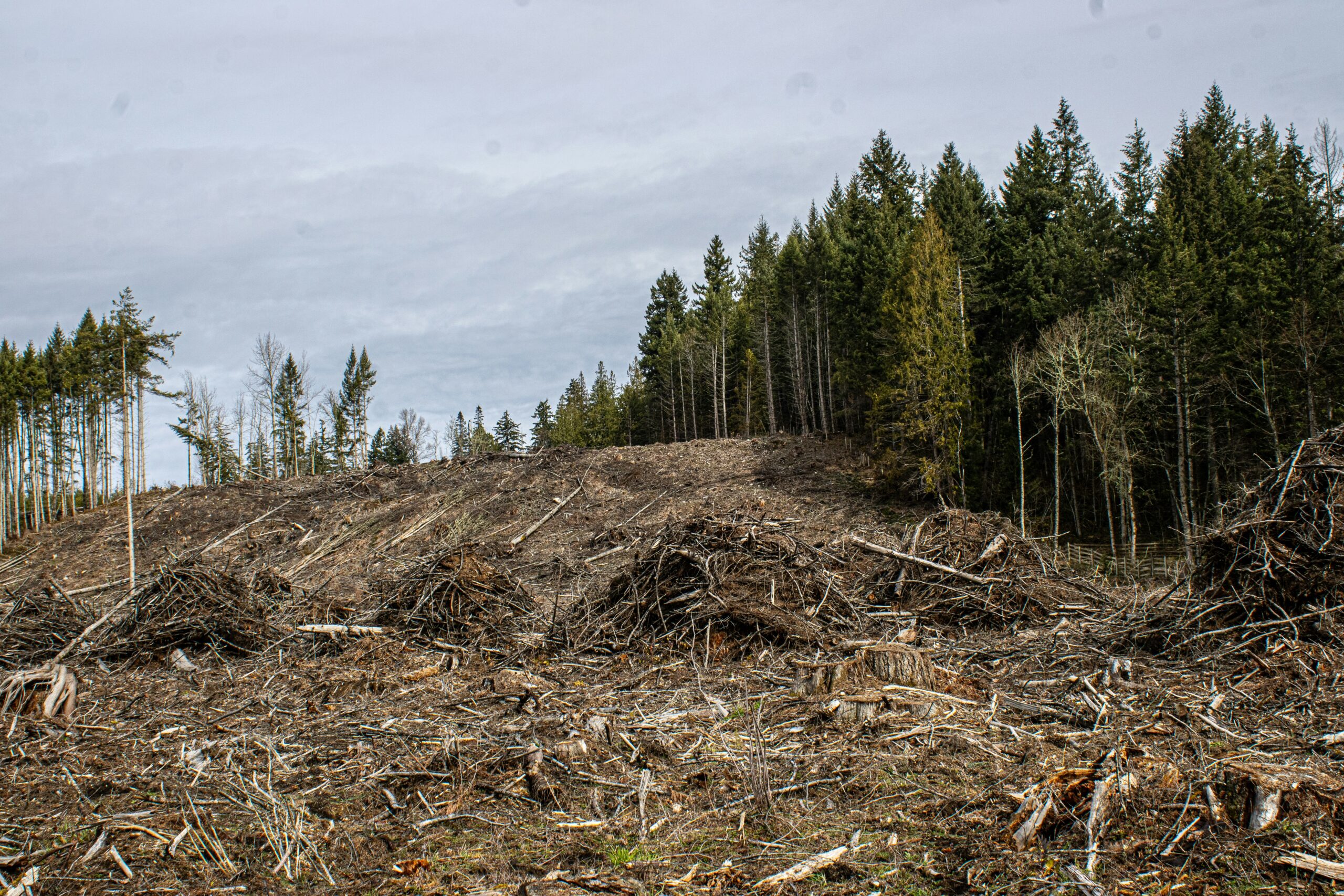The European Union Deforestation Regulation (EUDR) was designed with a powerful goal in mind: to cut deforestation out of global supply chains. But while its environmental mission is clear, the road to implementation has been anything but simple. Many companies have struggled with data collection, traceability mapping, and the constant demand for proof of compliance.
Recognizing this, the European Commission announced a set of simplification measures in April 2025 aimed at making EUDR compliance more practical and less burdensome. These updates don’t weaken the regulation’s environmental objectives. Instead, they focus on helping businesses meet them more efficiently. In this article, we’ll break down what’s changed, why it matters, and how organizations navigate these updates with automation, accuracy, and confidence.
Why Simplification Was Needed
Since the EUDR entered into force in 2023, compliance has felt overwhelming for many businesses. From sourcing raw materials to submitting due diligence statements, every step requires detailed data and verification.
For small and medium-sized enterprises, this often meant hiring extra staff or outsourcing tasks just to stay compliant. Even large companies found themselves buried under spreadsheets, geolocation reports, and evolving guidance documents.
The European Commission realized that without streamlining, the regulation risked becoming unmanageable – not just for companies, but for authorities responsible for enforcement. That’s why the simplification measures were introduced in 2025, following months of industry feedback and consultations with national ministries.
What the EUDR Simplification Package Changes
The 2025 simplification package introduces several key updates that make the compliance process smoother without reducing accountability. Let’s look at the most relevant adjustments.
1. Reuse of Due Diligence Statements
Previously, companies had to submit a new due diligence statement (DDS) for every single shipment or batch of goods. Now, under the revised framework, existing DDS records can be reused for goods previously imported into the EU.
This change significantly reduces paperwork and avoids duplication of verified data. It’s especially useful for businesses with ongoing trade in consistent commodities, such as coffee, cocoa, or palm oil.
2. Group-Level Submissions
Another major step forward is allowing authorized representatives to file due diligence statements on behalf of an entire group of companies. This simplifies internal management for multinational corporations, ensuring consistency and saving time.
3. Annual Reporting Instead of Batch-Level Reporting
Perhaps the most impactful update is the ability to submit annual DDS reports instead of filing one for every shipment. Companies can now consolidate multiple batches into a single, comprehensive yearly submission. This not only lowers administrative costs but also helps compliance teams focus on risk management rather than repetitive documentation.
4. Simplified Rules for Large Processors
Large processing companies can now refer directly to supplier DDS reference numbers instead of collecting every piece of evidence again. This “reuse principle” acknowledges that upstream operators have already conducted due diligence, eliminating redundant verification steps down the chain.
5. Re-importation Simplification
For products previously exported from the EU and later re-imported, companies can rely on their original DDS. This prevents unnecessary double work and streamlines trade flow across EU borders.

Our Role in Simplifying Your Compliance Journey
Na adrese EUDR.co, we’ve built our entire platform around one principle: make sustainability compliance accessible, automated, and reliable. These simplifications perfectly align with what we already stand for – efficiency through technology.
We help companies translate EUDR requirements into clear, actionable steps, using tools that minimize manual input while maximizing accuracy.
How We Do It:
- Automated data collection: Our platform gathers and organizes all necessary supply chain data, from product origin details to supplier information, in one place.
- Satellite-based monitoring: We use geospatial data to verify deforestation-free sourcing and generate sustainability insights that stand up to audit-level scrutiny.
- Reusable documentation: Once you’ve completed due diligence for a product, our system automatically stores and formats that data for reuse in future DDS filings.
- Simplified risk assessment: Built-in algorithms assess risk levels based on geolocation, country classification, and supplier history, helping your team prioritize where to dig deeper.
- Accessible and affordable: Whether you’re a large enterprise or a growing exporter, our pricing and tools scale with your business.
By combining automation with expert compliance logic, we turn what used to be a month-long administrative process into a structured, repeatable workflow that fits into your regular operations.

The Logic Behind the Simplifications
The European Commission didn’t just simplify the EUDR for convenience. These changes are built on a logic of proportionality – making compliance obligations match the level of risk.
For example, sourcing from a low-risk country (like Ukraine, Finland, or Portugal) now requires fewer due diligence steps compared to high-risk countries (such as Russia or Myanmar). This risk-based approach ensures resources are directed where deforestation risks are actually significant.
It’s also a signal to companies: sustainable sourcing is no longer about paperwork; it’s about verifiable impact. The new model encourages smarter use of technology, shared responsibility within supply chains, and improved alignment with other ESG frameworks like the CSRD and CSDDD.
Country Risk Classification: The Heart of EUDR Efficiency
One of the most talked-about changes in the 2025 updates is the formal introduction of country risk classification under Commission Implementing Regulation (EU) 2025/1093. This system helps the European Commission focus its monitoring efforts where the risk of deforestation is highest, rather than applying equal scrutiny everywhere.
How the Risk Categories Are Determined
Countries (or sometimes regions) are now officially classified as low, standard, or high risk, based on measurable criteria such as:
- Deforestation and forest degradation rates
- Agricultural expansion trends
- Land governance and enforcement quality
- Transparency of sustainability data
- Historical deforestation patterns
These indicators combine both quantitative and qualitative factors, creating a more objective and data-driven method for evaluating risk.
What Each Risk Level Means for Businesses
This classification allows the EU to focus its enforcement on areas that matter most, while adjusting due diligence expectations accordingly:
- Země s nízkým rizikem: Enjoy simplified due diligence, lighter documentation, and fewer inspections.
- Země se standardním rizikem: Continue with normal due diligence procedures.
- Vysoce rizikové země: Face stricter control, full verification, and enhanced reporting.
Current Risk Landscape
As of mid-2025, countries such as Belarus, Russia, Myanmar, and North Korea are classified as high risk, while Ukraine and all EU member states hold low-risk status.
This tiered approach helps balance environmental protection with economic practicality. It reduces unnecessary barriers for responsible producers and allows regulators to focus attention where illegal deforestation remains a serious threat.
What Companies Should Do Now
Simplification doesn’t mean you can relax. The deadlines haven’t changed – only the workload has been adjusted to make compliance achievable. Medium and large operators must still be ready by 30 December 2025, while SMEs have until 30 June 2026.
1. Review Your Data Structure
Make sure supplier, geolocation, and legality information is complete, traceable, and well organized. Missing or inconsistent data can delay your due diligence process and complicate future audits.
2. Identify Risk Levels
Determine which of your sourcing countries fall under high, standard, or low risk according to the latest EU classification. This helps prioritize where to focus your verification efforts and allocate resources efficiently.
3. Digitize Your Compliance Process
If you’re still relying on spreadsheets or manual tracking, now is the time to switch to digital systems. Automation makes it easier to collect, manage, and reuse data while reducing the chance of human error.
4. Prepare Annual DDS Templates
Start consolidating your information so you can move toward annual due diligence reporting. Setting up reusable templates now will save time when the reporting period begins and simplify ongoing compliance.
5. Collaborate With Suppliers
Your compliance is only as strong as your suppliers’ data. Make sure they understand their due diligence obligations, share DDS references on time, and maintain transparency about sourcing practices.
6. Plan for Audits
Even with the simplification measures, companies should always be ready to demonstrate their verification processes. Keep documentation organized, maintain evidence of due diligence, and ensure your records are easy to access when requested.

Challenges That Remain
While simplification helps, compliance still isn’t a walk in the park. There are ongoing debates in the EU Parliament about further amending the regulation. Some member states even propose adding a new “no risk” category, which environmental organizations warn could open loopholes for illegal timber or agricultural imports.
Businesses must stay flexible, because EUDR is evolving. The Commission plans to update country classifications regularly based on new data, and there will likely be more clarifications as practical enforcement begins in 2025–2026.
The key challenge now is not just compliance but consistency: maintaining accurate, verifiable records that can withstand scrutiny across markets and over time.
The Bigger Picture: ESG Alignment
The EUDR simplifications are part of a broader effort to harmonize EU sustainability regulations. The Commission understands that companies are already grappling with ESG frameworks like the CSRD (Corporate Sustainability Reporting Directive) and the CSDDD (Corporate Sustainability Due Diligence Directive).
By allowing annual DDS reports and clearer risk differentiation, EUDR compliance now aligns more naturally with annual ESG reporting cycles. It’s a step toward a unified sustainability reporting ecosystem rather than a fragmented web of overlapping obligations.
This shift also means compliance professionals can start thinking strategically: integrating EUDR data into broader sustainability metrics rather than treating it as an isolated task.
What Comes Next
The European Commission has made it clear that the EUDR’s core mission remains unchanged: ensuring that products entering or leaving the EU are deforestation-free and legally produced. Simplifications are meant to help, not delay.
Still, the debate over enforcement timing continues. Some major companies have called for another one-year delay, while others, including Nestlé and Ferrero, insist the current timeline is both realistic and necessary.
For now, the message is simple: stay the course. Build the systems, verify your supply chains, and prepare your reports. With the right tools, compliance is achievable – even for complex, multi-tiered operations.
Závěr
EUDR simplification isn’t a rollback – it’s a course correction. The European Commission has acknowledged the real-world challenges of turning sustainability goals into operational reality and responded with practical updates that keep the law’s purpose intact.
By reusing due diligence data, allowing group-level submissions, and focusing on risk-based priorities, the new framework makes compliance achievable for more companies, not just the largest ones.
Často kladené otázky
1. What is the main goal of the EUDR simplification package?
The European Commission introduced the simplification package to make compliance with the EU Deforestation Regulation (EUDR) more practical for businesses. It doesn’t change the regulation’s environmental goals but helps companies meet them more efficiently. Key changes include reusing due diligence statements, allowing group-level submissions, and switching to annual reporting instead of batch-level filings.
2. What does “reusing due diligence statements” mean in practice?
Under the new rules, companies can reuse existing due diligence statements (DDS) for goods already verified and imported into the EU. This eliminates repetitive reporting and saves time, especially for businesses that trade regularly in the same commodities.
3. Does simplification mean less environmental oversight?
No. Simplification doesn’t weaken the regulation. It removes duplicate administrative work but keeps the core requirements for deforestation-free and legally sourced products intact. The goal is to make compliance achievable while maintaining environmental integrity.
4. How can companies prepare for EUDR compliance now?
Start by reviewing your data systems, identifying risk levels, and digitizing compliance processes. Prepare annual DDS templates and work closely with suppliers to ensure they can provide complete and accurate information. Tools like EUDR.co’s platform can automate these steps and simplify reporting.
5. What role does EUDR.co play in helping businesses comply?
At EUDR.co, we make EUDR compliance faster and more reliable. Our platform automates supply chain data collection, satellite-based verification, and due diligence reporting. We help companies reuse documentation, monitor sourcing in real time, and stay audit-ready without adding unnecessary workload.


